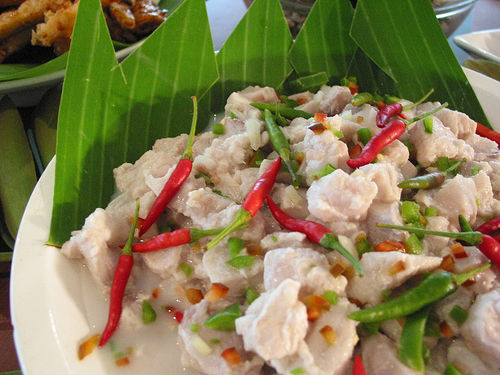 |
| Avocado Salsa |
As part of my continuous recovery, I am oblige to discover healthier foods that are locally available here in the Philippines. Every Sunday, it is my routine to go to the market to buy stocks for the whole week, this will lessen the time and prevent hassle in preparing what to cook for every meal. I discovered that there were lots of ripe avocados that can be buy from the street vendors. Maybe it is their season of abundance. One of the vendor had offered me and without any second thought I bought 2 kilos. My daughter asked me what shall I do with it and I said, just watch and eat. She was only familiar with adding sugar and milk. Sometimes she doesn't want avocado because of its bitterness and color.
Some nutritionists conducted studies that Avocado contains carotenoid lutein, carotenoids, zeaxanthin, alpha-carotene, and beta-carotene,and even significant amounts of vitamin E that can combat prostate cancer.
They believe that it also have high levels of phytonutrients or phytochemicals – plant compounds thought to have health-protecting qualities – that are often found in dark colored fruits and vegetables. This compound can prevent Oral Cancer.
For diabetic person, avocado can also be good for them. Avocados also offer vitamin E that helps neutralize free radicals, folate that may lower homocysteine levels in the blood, and fiber that helps regulate blood sugar levels. All of these functions offer important benefits for people with diabetes. Ounce-per-ounce, avocados rank highest in monunsaturated fat, vitamin E, folate, potassium, magnesium, lutein, beta-sitosterol and glutathione, compared to other commonly eaten fruits. (http://einron.hubpages.com/hub/avocadocuresprostateoralcancer)
After we arrived from the market, I immediately prepare a recipe which I think it can be interesting for the whole family since this is not common for us.
Ingredients:
- 2 ripe avocados (sliced and cut into cube)
- 3 tomatoes (smaller size than the avocado)
- chopped fresh cilantro (it depend on how many cup that you want)
- shallots or onion (sliced)
- squeeze juice of lime (kalamansi)
- 3 tbsp. extra-virgin olive oil (or virgin coconut oil)
- 2 pickled jalapeno chili, minced
- fresh ground black pepper
- big pinch salt
Procedure:
- Toss all ingredients together in a bowl
- Leave it for 4 hours to let the aroma combine with its other.
- Best serve if you have pita bread, nachos or tacos.









 6:35 AM
6:35 AM
 Unknown
Unknown
















